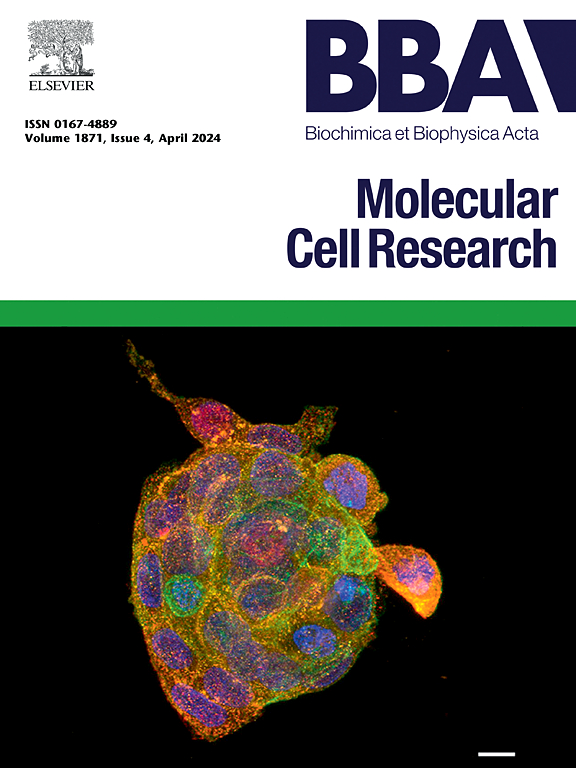真核生物翻译起始因子 5A:在蛋白质合成中的作用和机制。
IF 3.7
2区 生物学
Q1 BIOCHEMISTRY & MOLECULAR BIOLOGY
Biochimica et biophysica acta. Molecular cell research
Pub Date : 2024-09-19
DOI:10.1016/j.bbamcr.2024.119849
引用次数: 0
摘要
真核细胞内的蛋白质合成是一个涉及各种翻译因子的复杂过程。在这些因子中,真核翻译起始因子 5A(eIF5A)是一个具有高度进化保护性的关键翻译因子。eIF5A 的独特之处在于它是真核细胞中唯一含有次碱基修饰的蛋白质。eIF5A 最初被认为是一种翻译起始因子,后来发现它主要在翻译延伸阶段发挥作用。值得注意的是,eIF5A 能促进含有多脯氨酸段的肽序列的翻译,并对蛋白质合成的延伸和终止阶段产生普遍的调节作用。此外,eIF5A 还通过调节特定蛋白质的翻译间接影响细胞内的各种生理过程。本综述全面概述了 eIF5A 的结构、生理功能、各种翻译后修饰及其与各种人类疾病的关联。eIF5A 与细菌同源物 EF-P 的比较将讨论扩展到 eIF5A 的进化保护。这凸显了它在不同生命领域的重要性。本文章由计算机程序翻译,如有差异,请以英文原文为准。
Insights into eukaryotic translation initiation factor 5A: Its role and mechanisms in protein synthesis
The protein synthesis within eukaryotic cells is a complex process involving various translation factors. Among these factors, eukaryotic translation initiation factor 5 A (eIF5A) emerges as a crucial translation factor with high evolutionary conservation. eIF5A is unique as it is the only protein in eukaryotic cells containing the hypusine modification. Initially presumed to be a translation initiation factor, eIF5A was subsequently discovered to act mainly during the translation elongation phase. Notably, eIF5A facilitates the translation of peptide sequences containing polyproline stretches and exerts a universal regulatory effect on the elongation and termination phases of protein synthesis. Additionally, eIF5A indirectly affects various physiological processes within the cell by modulating the translation of specific proteins. This review provides a comprehensive overview of the structure, physiological functions, various post-translational modifications of eIF5A, and its association with various human diseases. The comparison between eIF5A and its bacterial homolog, EF-P, extends the discussion to the evolutionary conservation of eIF5A. This highlights its significance across different domains of life.
求助全文
通过发布文献求助,成功后即可免费获取论文全文。
去求助
来源期刊
CiteScore
10.00
自引率
2.00%
发文量
151
审稿时长
44 days
期刊介绍:
BBA Molecular Cell Research focuses on understanding the mechanisms of cellular processes at the molecular level. These include aspects of cellular signaling, signal transduction, cell cycle, apoptosis, intracellular trafficking, secretory and endocytic pathways, biogenesis of cell organelles, cytoskeletal structures, cellular interactions, cell/tissue differentiation and cellular enzymology. Also included are studies at the interface between Cell Biology and Biophysics which apply for example novel imaging methods for characterizing cellular processes.

 求助内容:
求助内容: 应助结果提醒方式:
应助结果提醒方式:


